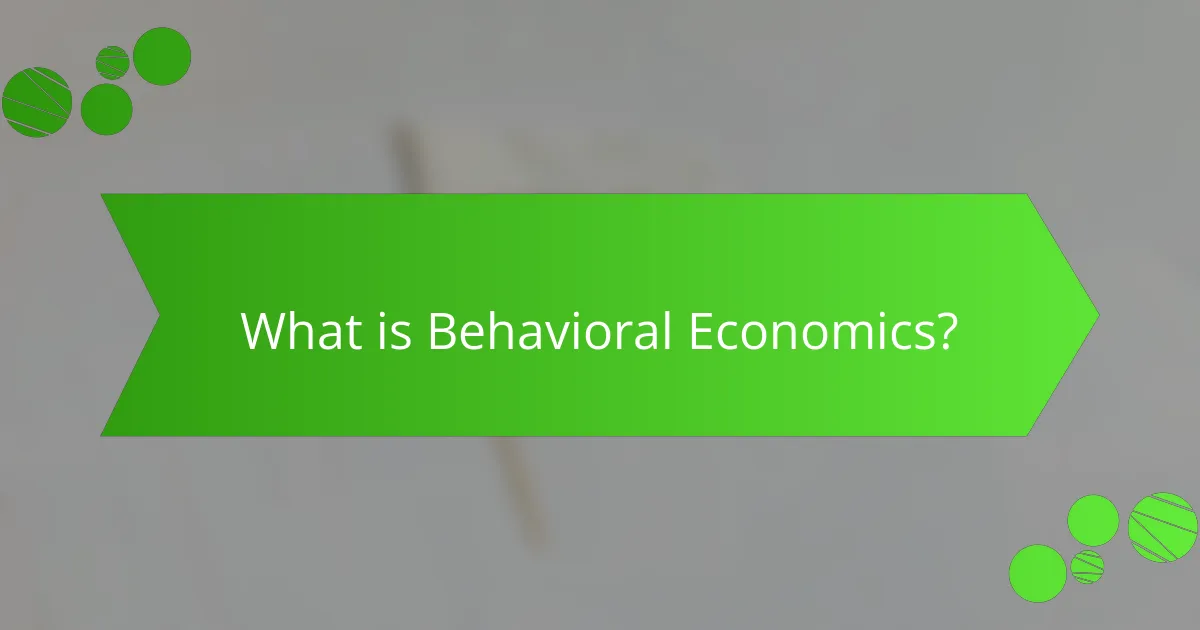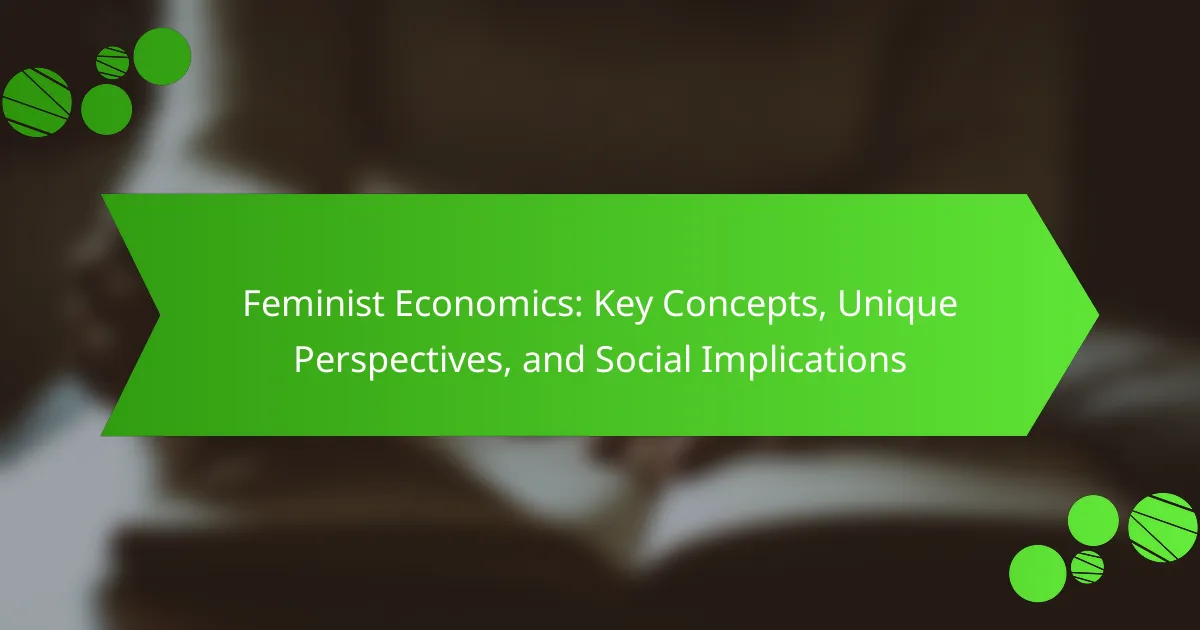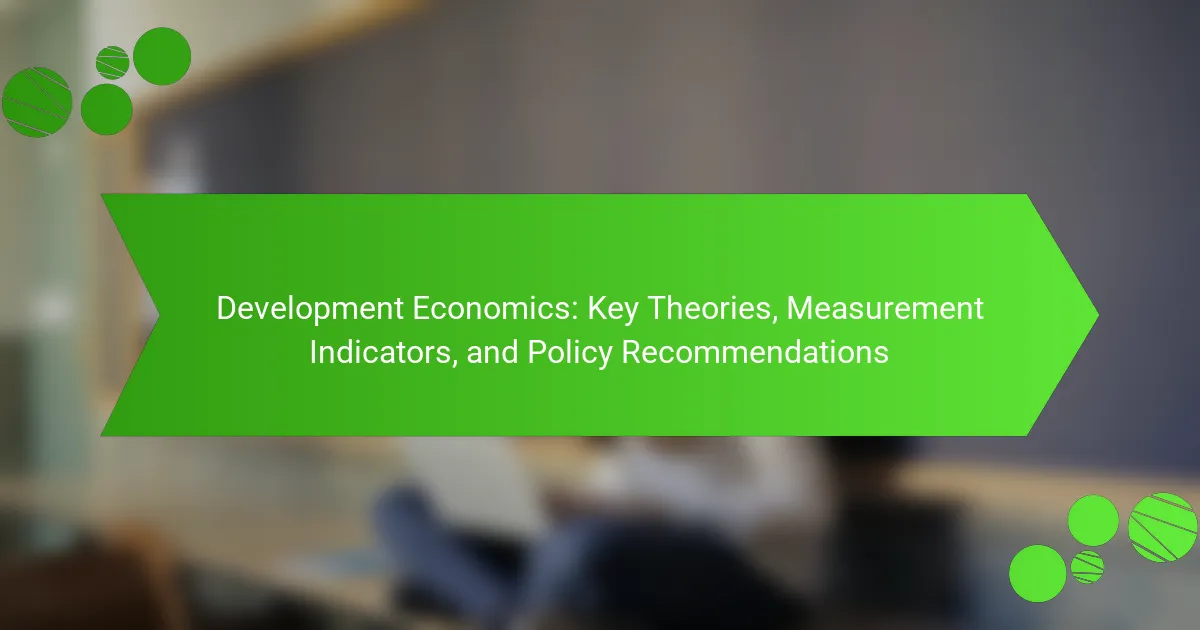Behavioral economics is a field that examines the interplay between psychological factors and economic decision-making, highlighting how emotions, biases, and social influences can lead individuals to make irrational choices. Unlike traditional economics, which assumes rational behavior aimed at maximizing utility, behavioral economics reveals that concepts such as loss aversion and framing effects significantly shape consumer choices. This article explores key insights from behavioral economics, its practical applications in marketing, public policy, and finance, and how understanding these influences can enhance strategies for improving economic outcomes.

What is Behavioral Economics?
Behavioral economics is a field that studies how psychological factors influence economic decision-making. It combines insights from psychology and economics to understand why people often make irrational choices. Traditional economics assumes that individuals act rationally to maximize their utility. However, behavioral economics recognizes that emotions, biases, and social influences can lead to suboptimal decisions. Research indicates that factors like loss aversion and framing effects significantly impact choices. For instance, people tend to prefer avoiding losses over acquiring equivalent gains. This field has practical applications in areas such as marketing, public policy, and finance. Understanding these behaviors can lead to better strategies for influencing consumer behavior and improving economic outcomes.
How does Behavioral Economics differ from traditional economics?
Behavioral economics differs from traditional economics primarily in its approach to human decision-making. Traditional economics assumes that individuals are rational actors who make decisions to maximize utility based on complete information. In contrast, behavioral economics recognizes that psychological factors and cognitive biases significantly influence decision-making.
For instance, behavioral economics studies how emotions, social norms, and heuristics impact choices. Research has shown that people often rely on mental shortcuts, which can lead to systematic errors. A well-known example is the endowment effect, where individuals assign higher value to items they own than to similar items they do not own.
Additionally, behavioral economics incorporates empirical evidence from psychology to explain economic behavior. Traditional economics typically relies on abstract models and theories that assume rationality. Overall, the key difference lies in the recognition of human behavior’s complexities and irrationalities in behavioral economics.
What are the key principles of Behavioral Economics?
The key principles of Behavioral Economics include the concepts of bounded rationality, loss aversion, and social preferences. Bounded rationality suggests that individuals make decisions based on limited information and cognitive constraints. Loss aversion indicates that people prefer to avoid losses rather than acquiring equivalent gains. Social preferences highlight that individuals care about the outcomes of others, not just their own. These principles challenge traditional economic theories that assume rational decision-making. Research by Daniel Kahneman and Amos Tversky supports these concepts, demonstrating how real-world decisions often deviate from rational models.
How do psychological factors influence economic decision-making?
Psychological factors significantly influence economic decision-making by shaping individuals’ perceptions, preferences, and behaviors. Cognitive biases, such as loss aversion, lead people to prefer avoiding losses over acquiring equivalent gains. This bias can result in suboptimal financial choices, such as holding onto losing investments. Emotional states, like fear or excitement, also impact decisions, often leading to impulsive or irrational behavior. For instance, during market downturns, fear can prompt panic selling, while optimism can drive excessive risk-taking in bullish markets. Social influences, including peer pressure and cultural norms, further complicate decision-making processes. Research shows that individuals often conform to group behaviors, affecting their spending and saving habits. Overall, understanding these psychological factors is crucial for predicting economic behavior and improving financial outcomes.
Why is Behavioral Economics important in understanding human behavior?
Behavioral economics is important in understanding human behavior because it combines insights from psychology and economics. This field examines how psychological factors influence economic decision-making. Traditional economics often assumes rational behavior, but behavioral economics reveals that people often act irrationally. For instance, biases like loss aversion affect choices, leading individuals to prefer avoiding losses over acquiring equivalent gains. Research shows that over 70% of people exhibit loss aversion in financial decisions. Additionally, behavioral economics identifies heuristics that simplify decision-making but can lead to systematic errors. These insights help policymakers and businesses design better interventions and products that align with actual human behavior. Understanding these patterns allows for more effective strategies in various sectors, including finance, health, and marketing.
What role does Behavioral Economics play in consumer behavior?
Behavioral economics significantly influences consumer behavior by examining how psychological factors affect decision-making. It challenges the traditional economic assumption that consumers are rational actors. Research shows that consumers often rely on heuristics and biases when making choices. For instance, the anchoring effect demonstrates how initial information can skew perceptions of value. A study by Tversky and Kahneman illustrates this phenomenon, showing that consumers may overvalue discounted prices based on initial reference points. Additionally, loss aversion indicates that consumers prefer avoiding losses over acquiring equivalent gains. This principle is supported by empirical evidence from various behavioral studies. Overall, behavioral economics provides valuable insights into the complexities of consumer behavior, revealing how emotions and cognitive biases shape purchasing decisions.
How can Behavioral Economics help in predicting market trends?
Behavioral economics helps predict market trends by analyzing how psychological factors influence economic decisions. It examines biases and heuristics that affect consumer behavior. For example, loss aversion leads consumers to react more strongly to potential losses than gains. This can cause sudden market shifts when negative news emerges. Additionally, social proof influences buying behavior, as consumers often look to others for cues on what to purchase. Research shows that these behavioral patterns can lead to predictable market reactions. A study by Thaler and Sunstein highlights how behavioral insights can improve forecasting accuracy. By understanding these behaviors, analysts can better anticipate market movements.
What are the foundational concepts of Behavioral Economics?
Behavioral economics focuses on the psychological factors that influence economic decision-making. Key concepts include bounded rationality, which suggests that individuals make decisions based on limited information and cognitive biases. Loss aversion indicates that people prefer avoiding losses over acquiring equivalent gains. The endowment effect shows that individuals value items more highly simply because they own them. Anchoring refers to the tendency to rely heavily on the first piece of information encountered when making decisions. These concepts challenge traditional economic theories that assume rational behavior. Research in behavioral economics has demonstrated that these psychological factors significantly impact consumer behavior and market outcomes.
What is the concept of bounded rationality?
Bounded rationality is a concept in behavioral economics that describes the limitations of human decision-making. It suggests that individuals do not always act rationally due to cognitive limitations and the constraints of available information. Instead of optimizing decisions, people often rely on heuristics or rules of thumb. This can lead to satisfactory rather than optimal outcomes. The term was popularized by Herbert Simon in the 1950s. Simon argued that human beings are “satisficers,” seeking solutions that meet acceptable criteria rather than the best possible option. Research shows that bounded rationality affects various domains, including economic choices and policy-making.
How do heuristics and biases affect decision-making?
Heuristics and biases significantly affect decision-making by simplifying complex problems. Heuristics are mental shortcuts that help individuals make quick decisions. They often rely on past experiences and generalizations. Biases, on the other hand, are systematic errors in thinking that can lead to irrational choices.
For example, the availability heuristic leads people to judge the likelihood of events based on how easily examples come to mind. This can skew perceptions of risk. Confirmation bias causes individuals to favor information that confirms their existing beliefs. This can hinder objective decision-making.
Research shows that these cognitive shortcuts can lead to suboptimal outcomes. A study by Tversky and Kahneman highlights how biases can distort judgment. Their work demonstrates that people often rely on heuristics even when more accurate information is available.
In summary, heuristics and biases play a crucial role in shaping decision-making processes, often leading to irrational outcomes.
What real-world applications exist for Behavioral Economics?
Behavioral economics has several real-world applications across various sectors. In public policy, it informs interventions aimed at improving health outcomes, such as using default options for organ donation. In finance, it helps design better savings plans by understanding consumer biases toward immediate rewards. Retailers apply behavioral insights to enhance customer experiences, such as using scarcity tactics to boost sales. Education systems utilize behavioral principles to improve student performance through incentive structures. Additionally, behavioral economics influences marketing strategies by leveraging social proof and anchoring effects. Each application is rooted in understanding how psychological factors affect economic decision-making.
How is Behavioral Economics applied in marketing strategies?
Behavioral economics is applied in marketing strategies by influencing consumer behavior through psychological insights. Marketers utilize concepts such as loss aversion to craft messages that highlight potential losses from not purchasing. For instance, limited-time offers create urgency, prompting quicker decision-making. Additionally, social proof is leveraged by showcasing testimonials and reviews to build trust. Anchoring is another tactic where initial price points set consumer expectations for value. Research indicates that 70% of consumers are swayed by social proof in their buying decisions. By integrating these principles, brands effectively enhance engagement and drive sales.
What are examples of Behavioral Economics in public policy?
Nudging is a key example of behavioral economics in public policy. It involves subtly guiding choices without restricting options. For instance, automatic enrollment in retirement savings plans increases participation rates. Research shows that this approach can raise enrollment from 40% to over 90%. Another example is using default options in organ donation policies. Countries with opt-out systems see significantly higher donation rates compared to opt-in systems. Behavioral insights also inform tax compliance strategies. Simplifying tax forms can lead to increased filing rates. These examples demonstrate how behavioral economics effectively shapes public policy outcomes.
How can businesses leverage Behavioral Economics for success?
Businesses can leverage Behavioral Economics for success by understanding consumer decision-making processes. By applying principles such as nudging, businesses can influence choices without restricting options. For instance, presenting a default option can significantly increase enrollment rates in programs. Research shows that default settings can lead to a 30% increase in participation. Additionally, businesses can use social proof to encourage desired behaviors. Highlighting that others have made a purchase can boost sales. A study found that showing customer testimonials increased conversion rates by 15%. Lastly, businesses can implement loss aversion strategies. Consumers are more motivated to avoid losses than to achieve gains. This can be utilized in pricing strategies to enhance perceived value.
What strategies can companies adopt to influence consumer choices?
Companies can adopt several strategies to influence consumer choices. These strategies include utilizing social proof, scarcity, and anchoring techniques. Social proof involves showcasing testimonials or user reviews to build trust. Scarcity creates urgency by highlighting limited availability of products. Anchoring presents a higher-priced option first to make subsequent choices appear more affordable.
Research indicates that these strategies can significantly impact purchasing decisions. For example, a study by Cialdini (2009) found that people are more likely to choose a product when they see others endorsing it. Additionally, limited-time offers can increase sales by up to 300%, as shown in a report by the Journal of Consumer Research.
By implementing these strategies, companies can effectively guide consumer behavior and enhance sales outcomes.
How can Behavioral Economics improve product design and user experience?
Behavioral economics can improve product design and user experience by leveraging insights into human behavior and decision-making. It identifies cognitive biases that affect user choices. For example, the concept of loss aversion suggests users prefer avoiding losses over acquiring gains. This can guide designers to emphasize what users stand to lose by not using a product.
Additionally, the principle of default options shows that users are more likely to stick with pre-selected choices. By setting beneficial defaults, designers can enhance user satisfaction and engagement. Research by Thaler and Sunstein in “Nudge” demonstrates how small changes in choice architecture can lead to better decision outcomes.
Moreover, social proof influences user behavior by showcasing popular choices. Highlighting user testimonials or usage statistics can encourage new users to adopt a product. These strategies grounded in behavioral economics lead to more intuitive and user-friendly designs.
What are common misconceptions about Behavioral Economics?
Common misconceptions about Behavioral Economics include the belief that it only focuses on irrational behavior. In reality, it also examines how people make decisions that deviate from traditional economic theories. Another misconception is that Behavioral Economics disregards rationality entirely. Instead, it recognizes that people often behave rationally within certain contexts. Many also think that Behavioral Economics is a new field. However, its roots can be traced back to the works of psychologists and economists like Daniel Kahneman and Amos Tversky in the 1970s. Some believe that Behavioral Economics applies only to consumer behavior. In fact, its principles are applicable across various domains, including finance, health, and public policy. Lastly, there is a misconception that Behavioral Economics provides simple solutions to complex problems. The reality is that it offers insights that can inform better decision-making rather than straightforward answers.
Why do people often confuse Behavioral Economics with psychology?
People often confuse Behavioral Economics with psychology because both fields study human decision-making. Behavioral Economics integrates psychological insights into economic theory. It examines how cognitive biases affect economic choices. Psychology focuses on mental processes and behavior, which overlaps with economic decision-making. Both disciplines analyze the impact of emotions on choices. This shared focus on human behavior leads to confusion. Additionally, many scholars work at the intersection of both fields. This interdisciplinary approach further blurs the lines between them.
How does Behavioral Economics relate to rational choice theory?
Behavioral economics challenges the assumptions of rational choice theory. Rational choice theory posits that individuals make decisions by maximizing utility based on complete information and logical reasoning. In contrast, behavioral economics incorporates psychological insights into human behavior. It recognizes that individuals often act irrationally due to cognitive biases and emotional influences. For example, research shows that people may overvalue immediate rewards over long-term benefits, a phenomenon known as temporal discounting. This divergence from rational decision-making illustrates how real-world choices often contradict the predictions of rational choice theory.
What are the challenges and limitations of Behavioral Economics?
Behavioral economics faces several challenges and limitations. One significant challenge is the difficulty in predicting human behavior consistently. Traditional economic models assume rational decision-making, while behavioral economics acknowledges biases and heuristics. This complexity makes it hard to generalize findings across different contexts.
Another limitation is the reliance on experimental data, which may not always reflect real-world scenarios. Many studies are conducted in controlled environments, leading to questions about external validity. Additionally, behavioral interventions can be difficult to implement on a large scale.
There is also the challenge of measuring the impact of behavioral insights. Quantifying changes in behavior and assessing long-term effects can be complex. Furthermore, ethical considerations arise when applying behavioral strategies. Manipulating choices can lead to concerns about autonomy and informed consent.
Finally, integrating behavioral economics into policy-making can be challenging. Policymakers may struggle to balance behavioral insights with traditional economic theories. This can result in resistance to adopting behavioral approaches in economic planning.
What ethical considerations arise in the application of Behavioral Economics?
Ethical considerations in Behavioral Economics include manipulation, consent, and fairness. Behavioral Economics often uses nudges to influence decision-making. This raises concerns about whether individuals are being manipulated without their consent. The intention behind nudging can also be questioned. If the goal is to promote welfare, it may be viewed positively. However, if the intent is to benefit the nudger, it becomes problematic. Fairness is another critical issue. Behavioral interventions may disproportionately affect vulnerable populations. This can lead to inequities in outcomes. Transparency in the application of these techniques is essential. Individuals should be informed about how their choices are influenced. Overall, ethical application requires balancing effectiveness with respect for autonomy and equity.
How can misunderstandings of Behavioral Economics lead to poor decision-making?
Misunderstandings of Behavioral Economics can lead to poor decision-making by causing individuals to misinterpret human behavior and economic choices. For instance, people may overestimate their ability to predict outcomes based on past experiences. This overconfidence can result in risky financial decisions, such as investing in volatile stocks. Additionally, misconceptions about biases, like loss aversion, can lead to inaction in beneficial situations. Research indicates that cognitive biases often distort judgment, causing individuals to make choices that do not align with their best interests. A study by Tversky and Kahneman highlights how anchoring effects can skew decision-making processes. Such misunderstandings can ultimately hinder effective problem-solving and resource allocation.
What practical tips can be applied from Behavioral Economics?
Behavioral economics offers practical tips for decision-making. One key tip is to simplify choices. Research shows that fewer options can lead to better decisions. Another tip is to use default settings. Studies indicate that people often stick with defaults, which can promote beneficial behaviors. Additionally, incorporating nudges can guide choices without restricting freedom. For instance, placing healthier food at eye level encourages better eating habits. Lastly, framing decisions positively can influence outcomes. Evidence suggests that people respond better to positive messages. These strategies leverage human behavior insights to improve decision-making effectively.
How can individuals use insights from Behavioral Economics to improve their financial decisions?
Individuals can use insights from Behavioral Economics to improve their financial decisions by recognizing cognitive biases. Cognitive biases can lead to poor financial choices. For instance, loss aversion causes individuals to fear losses more than they value gains. This can result in avoiding beneficial investments.
Another insight is the concept of mental accounting. People often categorize their money into different “accounts.” This can lead to irrational spending behaviors. For example, individuals may spend a tax refund impulsively instead of saving it.
Additionally, individuals can utilize the principle of nudging. Small changes in how choices are presented can significantly influence decisions. For instance, automatically enrolling employees in retirement savings plans increases participation rates.
Research shows that implementing these behavioral insights can lead to better financial outcomes. A study by Thaler and Benartzi demonstrated that participants who used automatic savings plans saved more effectively.
Understanding these principles enables individuals to make informed, rational financial decisions. By being aware of biases, categorizing money wisely, and using nudges, individuals can enhance their financial well-being.
What best practices can organizations implement based on Behavioral Economics principles?
Organizations can implement several best practices based on Behavioral Economics principles. First, they can utilize nudges to influence decision-making. For example, changing the default option in a retirement plan can significantly increase participation rates. Second, organizations can simplify choices to reduce decision fatigue. Research shows that fewer options can lead to better decisions. Third, they can leverage social proof by showcasing peer behaviors. When customers see others making a purchase, they are more likely to follow suit. Fourth, organizations can create urgency through limited-time offers. This tactic can spur quicker decision-making. Lastly, providing feedback on choices can enhance future decision-making. Studies indicate that feedback helps individuals learn from their past behaviors. These practices are grounded in Behavioral Economics and have been shown to improve organizational outcomes.
Behavioral Economics is a field that explores the intersection of psychology and economics, focusing on how psychological factors influence economic decision-making. The article outlines key principles such as bounded rationality, loss aversion, and social preferences, emphasizing the differences between behavioral and traditional economics. It discusses the implications of these insights for consumer behavior, market predictions, and practical applications in areas like marketing and public policy. Additionally, the article addresses common misconceptions, ethical considerations, and offers practical tips for individuals and organizations to improve decision-making based on behavioral economics principles.



